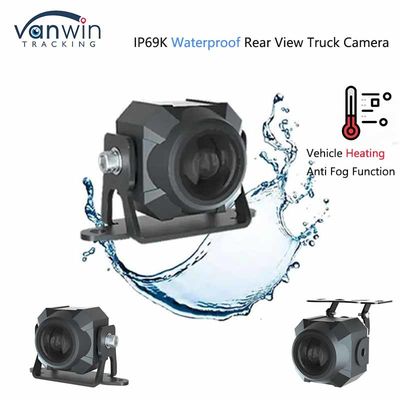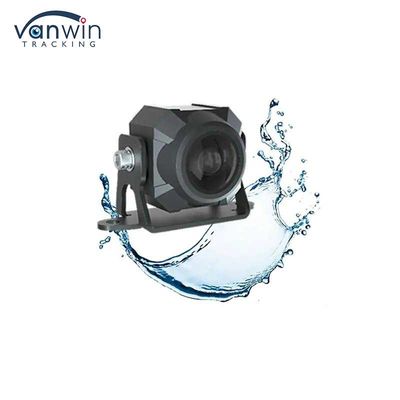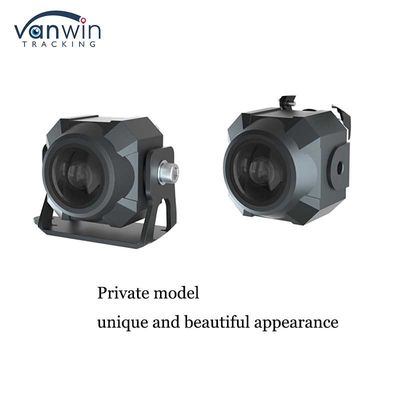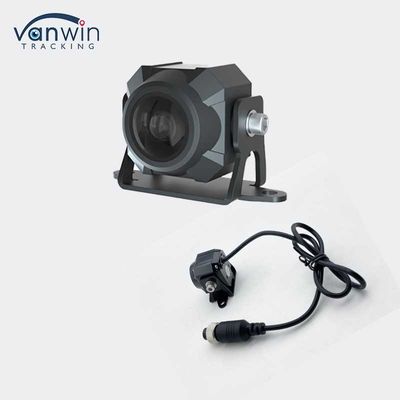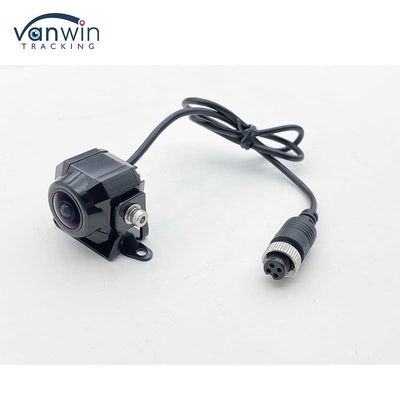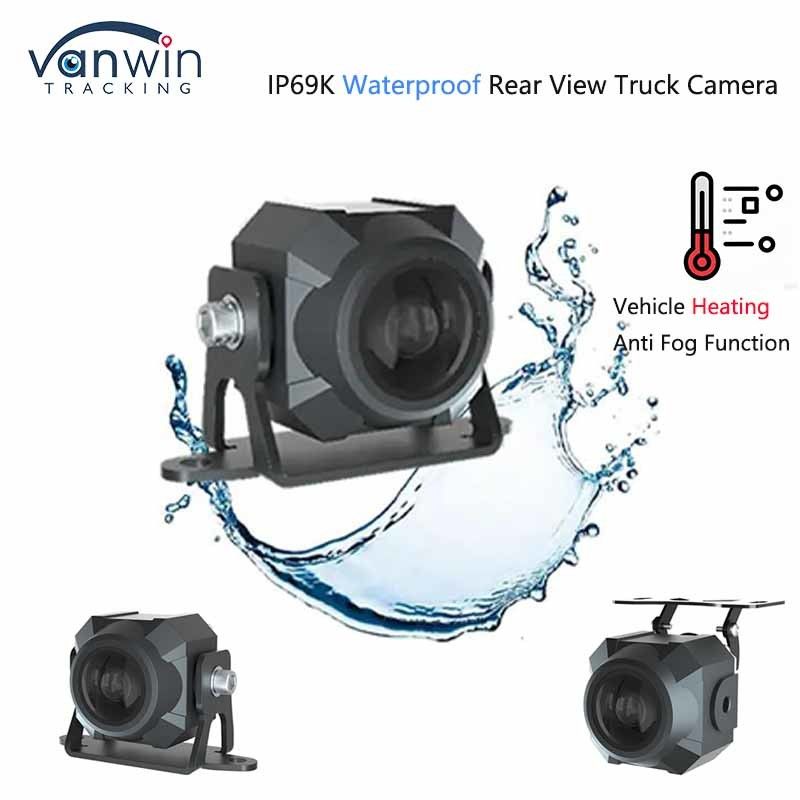IP69K Waterproof Rear View Truck Camera Heating 4pin Aviation AHD 1080P Camera with 1080P 2.0MP Resolution
Product Details:
| Place of Origin: | Shenzhen,China |
| Brand Name: | Vanwin Tracking |
| Certification: | CE/FCC/RoHS |
| Model Number: | VW-68H |
Payment & Shipping Terms:
| Minimum Order Quantity: | 2 pcs |
|---|---|
| Price: | negotiated |
| Packaging Details: | Neutral carton box package by default. Customize package is available if order reach 300 pcs. Customize Logo printing is available for order over 100 pcs . |
| Delivery Time: | 2-3 days for samples,15-30 days for large orders |
| Payment Terms: | T/T or western Union or Paypal |
| Supply Ability: | 50,000pcs per month; |
|
Detail Information |
|||
| Features: | Waterproof, NIGHT VIEW | Product Name: | Vehicle Heating Anti Fog Function Car Camera |
|---|---|---|---|
| Image Sensor: | XC5321 + GC2083 1/3" | Sensor: | CMOS |
| View Angle: | 180° | Resolution: | 1080P(2.0MP)/720P(1.3MP)/700TVL(Sony CCD) |
| Waterproof: | IP69K | Lens: | 2.8mm |
| TV System: | PAL/NTSC (optional) | Voltage: | 9-18V DC |
| Highlight: | IP69K Rear View Truck Camera,Aviation AHD 1080P Camera,Waterproof Rear View Truck Camera |
||
Product Description
IP69K Waterproof Rear View Truck Camera Heating 4pin Aviation AHD 1080P Camera
Vehicle Heating Anti Fog Function Car Camera
Unrivaled Waterproof Capability
Boasting an IP69K rating, this rear - view truck camera is engineered to resist the most extreme water conditions. It can endure high - pressure, high - temperature water jets during intense vehicle washdowns, ensuring that water never seeps into its internal components. This level of waterproofing not only safeguards the camera from damage but also guarantees uninterrupted operation, even in the harshest weather and working environments. Whether it's torrential rain or splashing water on muddy construction sites, you can rely on this camera to provide clear views at all times.
Efficient Heating Function
The integrated heating function sets this camera apart. In cold weather conditions, when the lens is prone to fogging or icing, the heating element kicks in automatically. It rapidly warms up the lens surface, preventing the formation of condensation and ice crystals. This ensures that the camera's view remains unobstructed, allowing for continuous and reliable rear - view monitoring even in freezing temperatures. Whether you're operating in a cold mountainous region or a snowy urban area, the heating function guarantees that your camera functions optimally.
Convenient 4 - pin Aviation Connector
Featuring a 4 - pin aviation connector, this camera offers enhanced connectivity and durability. The aviation - grade connector is designed to withstand vibrations and harsh conditions commonly encountere
Heating Anti Fog Function Car Camera Main Specification
| Specification | 1/3" CMOS | 1/2.8" CMOS |
| System Standard | PAL/NTSC | PAL/NTSC |
| Effective Pixels | 1920(H)×1080(V) 1280(H)×720(V) |
1920(H)×1080(V) 1280(H)×720(V) |
| Minimum Illumination | 0.01Lux@(F1.2,AGC ON) OLUX with IR |
0.01Lux@(F1.2,AGC ON) OLUX with IR |
| Frame Rate | 1080P/720P@25fps 1080P/720P@30fps |
1080P/720P@25fps 1080P/720P@30fps |
| Focal Length | 1.51mm | 1.8mm |
| Field of View (FOV) | 194°(D) 180°(H)101.3(V) | 185°(D) 165°(H) 98°(V) |
| Aperture | F1.7 | F2.0 |
| Lens Structure | 2G5P+1IR | 6G+1IR |
Vehicle Heating Anti Fog Function Car Camera Photos
![]()
![]()
Why Choose This Vehicle Heating Anti Fog Function Car Camera?
Whether documenting snowy mountain hikes, monitoring humid industrial sites, or safeguarding home security in coastal areas, our Heating Anti-Fog Camera ensures uninterrupted clarity and durability. Elevate your imaging experience with technology that adapts to nature’s challenges.
Working Principle of Vehicle Heating Anti-Fog Function Car Camera
The anti-fog mechanism in vehicle cameras primarily combines temperature control, material science, and electronic technologies to prevent fogging caused by temperature differences or humidity, ensuring clear imaging. Below is a detailed breakdown of its core working principles:
1. Causes of Fogging
- Condensation: When the ambient temperature around the camera is lower than the lens surface temperature (e.g., cold weather or rapid temperature changes due to car air conditioning), water vapor in the air condenses into micro-droplets on the lens, forming a foggy layer.
- Humidity: High humidity environments (e.g., rain, fog) increase moisture adhesion to the lens surface.
2. Core Anti-Fog Technologies
(1) Heating Elements
- Heating Film/Resistance Wires: A transparent conductive film (e.g., ITO coating) or micro-resistance wires is integrated around or behind the lens. When powered, these elements generate heat.
- Uniform Heating: Ensures even heat distribution to avoid localized overheating or image distortion.
(2) Temperature & Humidity Sensors
- Environmental Monitoring: Sensors detect real-time temperature and humidity around the camera.
- Activation Logic: Automatically triggers heating when fog-prone conditions are detected (e.g., low temperature + high humidity).
(3) Smart Control Circuit
- Adaptive Power Management: Dynamically adjusts heating intensity based on sensor data, activating only when necessary to conserve energy.
- Low-Power Design: Powered by the vehicle’s electrical system (12V/24V) to minimize battery drain.
3. Anti-Fog Mechanism
- Surface Temperature Elevation: Heating raises the lens surface temperature above the dew point, preventing water vapor condensation.
- Rapid Defogging: If fog has already formed, heating evaporates droplets within seconds, restoring visibility.
4. Supplementary Technologies
- Hydrophobic Coating: A nano-scale hydrophobic layer on the lens repels water droplets.
- Sealed Housing: Waterproof and dustproof casing protects internal components from moisture ingress.
5. Application Scenarios
- Extreme Weather: Winter, snow, rain, or high-humidity regions.
- Temperature Gradients: Sudden temperature changes (e.g., moving from a warm garage to cold outdoor environments).
6. Advantages & Challenges
- Advantages:Ensures reliability of safety-critical systems like ADAS (Advanced Driver Assistance Systems), rearview cameras, and autonomous driving.
- Enhances driving safety in adverse conditions.
- Challenges:Balancing power consumption and heating efficiency.
- Preventing long-term thermal stress on lens materials or circuits.



